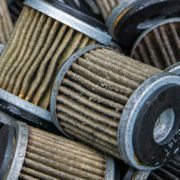How to Optimize Your Asset Health
The average asset manager runs an average of approximately 10,000 hours on the asset before it’s sold. So, you’ve had your asset for a while, but it has come time to sell it. Yet, you wonder how much life is left on that asset? If you keep it for another 10,000 hours, you can save a lot of money in replacement costs and maintenance. Your asset has run well, you know its maintenance history and you ask yourself do I really need to sell it?
Deciding whether to repair or sell
Many fleets run equipment to about 80 percent of their life expectancy then sell off. But, did you know you can incorporate filter debris analysis to determine equipment reliability at that 80 percent life expectancy? If an issue is found, you can proceed with a rebuild/repair or they can sell. Things to consider when making the decision to sell:
- Did you buy your asset used?
- How was your asset’s maintenance history prior to you buying it?
Utilizing filter debris analysis
You can utilize filter debris analysis (FDA) to determine how your asset is and how it’s holding up. Here are a couple of recommendations how to incorporate FDA into your program, depending on the estimated life expectancy:
| 0-20% | You could characterize this as break in or, in the case of used equipment, the baseline of your equipment. What is the wear pattern in the first 20% of your usage of the asset? Submitting three filters with oil samples on regular intervals can give you a pattern. |
| 20-80% | Recommended to test only when wear metal trends are increasing, or you see a significant jump in wear metals |
| 80%> | This is what is referred to a senior asset. Submitting three filters with oil samples on regular intervals can give you a pattern. Then review to determine retesting interval based on results of the FDA results. You may find you need to sell your asset before significant maintenance will occur, or you may find your asset has plenty of life on it. |
See what’s being caught in your filter
 FDA is a great tool to add to your asset reliability toolbox. It compliments fluid analysis testing by seeing not just the data circulating in the oil, but what is being caught in the filter. This data is crucial to understanding the reliability of your equipment.
FDA is a great tool to add to your asset reliability toolbox. It compliments fluid analysis testing by seeing not just the data circulating in the oil, but what is being caught in the filter. This data is crucial to understanding the reliability of your equipment.
See how one company was able to to save more than $250,000 by performing the testing and avoiding gearbox replacements.
Is filter debris analysis something you want to start performing on your asset? Contact your account manager or custserv@eoilreports.com to add it to your program.
Proven Impact. Proven Uptime. Proven Savings.
Let us prove it to you.





